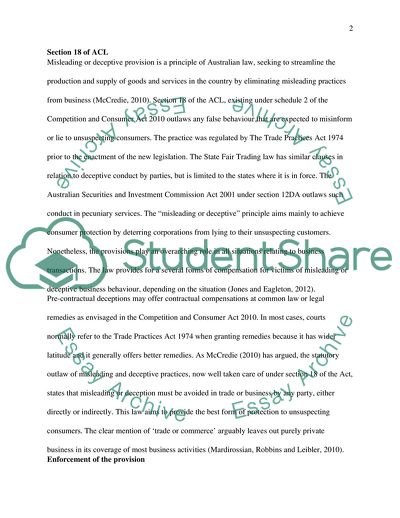Cite this document
(Australian Consumer Law 2010 Coursework Example | Topics and Well Written Essays - 2250 words, n.d.)
Australian Consumer Law 2010 Coursework Example | Topics and Well Written Essays - 2250 words. https://studentshare.org/law/1819246-business-law-s-18-of-the-australian-consumer-law-within-the-competition-and-consumer-act-2010-acl
Australian Consumer Law 2010 Coursework Example | Topics and Well Written Essays - 2250 words. https://studentshare.org/law/1819246-business-law-s-18-of-the-australian-consumer-law-within-the-competition-and-consumer-act-2010-acl
(Australian Consumer Law 2010 Coursework Example | Topics and Well Written Essays - 2250 Words)
Australian Consumer Law 2010 Coursework Example | Topics and Well Written Essays - 2250 Words. https://studentshare.org/law/1819246-business-law-s-18-of-the-australian-consumer-law-within-the-competition-and-consumer-act-2010-acl.
Australian Consumer Law 2010 Coursework Example | Topics and Well Written Essays - 2250 Words. https://studentshare.org/law/1819246-business-law-s-18-of-the-australian-consumer-law-within-the-competition-and-consumer-act-2010-acl.
“Australian Consumer Law 2010 Coursework Example | Topics and Well Written Essays - 2250 Words”. https://studentshare.org/law/1819246-business-law-s-18-of-the-australian-consumer-law-within-the-competition-and-consumer-act-2010-acl.


